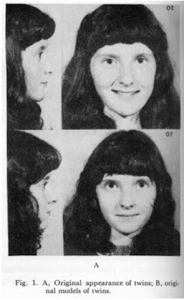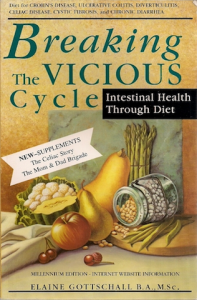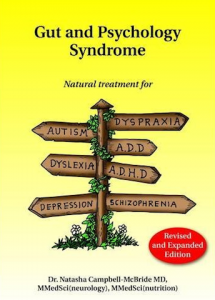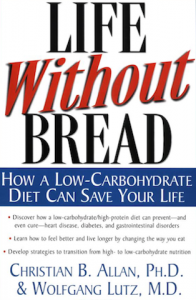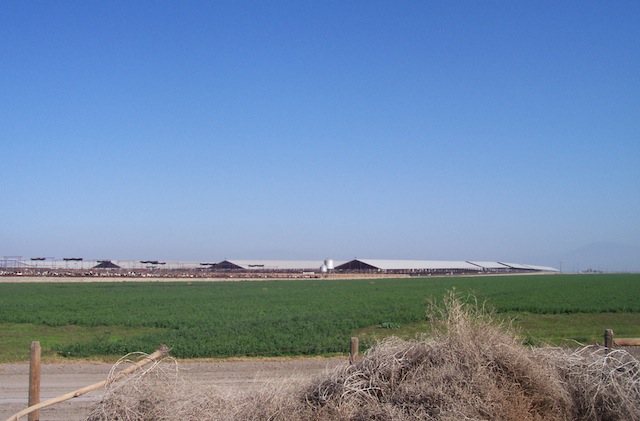I wish I knew then what I know now before conceiving my children. If I had known about the work of Dr. Weston A. Price, I could have eaten differently, and saved my family money and suffering. Maybe I could have avoided the problems I now see in the faces of my two girls.
My two girls suffer from such a common problem, it is now seen as “normal”. My girls do not have enough space in their mouths for all their teeth. This is the “physical degeneration” Dr. Weston A. Price saw in all primitive communities after exposure of only one generation to the “displacing foods of modern commerce”. In his time the “displacing foods” were: white sugar, white flour, pasteurized milk, canned foods, vegetable oils and convenience items with extenders and additives.
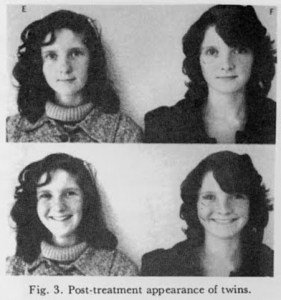
Here are the twins after dental intervention. First twin has standard orthodontic treatment and second twin had orthopedic treatment.
So what’s a Mother to do? I can’t go back in time and correct my errors but I can try not to make anymore. For the last three years, I have fed my family the most nourishing, quality foods I can find. We completely avoid all “displacing foods” except for holidays. Halloween, Valentine’s and Easter without candy seems to cause social problems with our children’s schooling community. Nevertheless, this approach of avoiding all “displacing foods”, except for children’s holidays, has improved my children’s health. Their dentist Dr. Hugh Thomson has noted the girls have “cavity resistant teeth”. This is a very good sign we are doing something right. But it does not solve the structural problems in the mouths of my children.
As a child, I had very crowded teeth and so many cavities I have lost count. I had eight extractions: four bicuspids and four wisdom teeth. I wore braces for two years and a retainer for one year. This is standard orthodontic practice. This process was fairly traumatic for me because I lived my prepubescent years with big spaces in my mouth due to the removal of the four bicuspids. Then I spent three years of my adolescence with braces. I always felt ugly.
When I was at the Weston A Price Conference in California last November, I heard a lecture by Dr. Louisa L. Williams. She introduced me to the difference between orthodontic and orthopedic dental practices. It was during this lecture that the lights came on for me. When I came home from the conference, I started reading her book Radical Medicine: Profound Intervention in a Profoundly Toxic Age. After reading the 1000 plus page book, I understood what Dr. Hugh Thomson wanted to do with Sonja’s emerging dental problems.
I feel really grateful for that lecture and book because I understood why I needed to move on Sonja’s work. Orthopedic dentistry works on improving the basic structure of the mouth compared to orthodontic dentistry which is more concerned with appearance. Orthopedic dentistry works best with younger children that are growing fast. It would have been better to start with Sonja at seven years of age. Sonja had two problems. First, she had a “finger sucking habit” which had to be broken before her pallet could be expanded. She had just turned nine when we started the pallet expansion. Pallet expansion works best before a child loses her baby molars. This usually happens at about eleven. So far, her top front teeth have lots of space now. Her lower jaw is still back, but nothing is holding her jaw back except the muscles and tendons which will loosen over time. I remind her to bring her jaw forward whenever I notice.
We thought we had gotten lucky with Erika. She had an over-bite but her teeth looked really straight. I was a bit worried because I have noticed that most children that have straight teeth as adults, have spaces between their teeth by age six. We put “overlays” on her baby molars which corrected her over-bite. In theory, when her adult molars come in they come in at the new height, permanently correcting the over-bite. When the baby teeth with the overlays fall out, their job is done.
Big changes happen in a child’s mouth at about seven. Erika’s permanent teeth came in crowded. About a month ago, Erika got an upper pallet expander. The pallet expander is on the inside of the teeth so the appliance is not visible. She will need an expander for her lower jaw, which Dr. Hugh Thomson recommended inserting about a month later, after Erika became used to the upper appliance. Even in a month, I can see more space for her upper teeth. Pallet expansion works best with younger children. It can happen really quickly.
It is my hope that my children will be able to keep all 32 of their teeth. I have only 24 teeth to chew my food. In Radical Medicine, Dr. Louisa Williams states pallet expansion improves digestion because it avoids extractions and maintains all the teeth for chewing food. Also, the pallet expansion increases the space in the mid-brain area. The mid-brain area houses the seat of our endocrine system, the pituitary gland. This helps the pituitary gland function normally. Hopefully, my girls will have their dental work all done before they hit their teenage years. The cost of early orthopedic intervention appears to by a fraction of the cost of regular orthodontic treatment.
Update October 2, 2009: Erika has had her lower appliance in for about a week. This appliance will increase the size of her lower jaw to accommodate her permanent teeth. The appliance has a key and lock system which increases the tension. We adjust the appliance twice a week ourselves. The biggest issue of earlier intervention with young children is that the parent must be willing to clean the appliance and child’s teeth at least once daily. It is too much to expect a seven year old to have the dexterity to clean their mouth sufficiently.
Undated December 27, 2009: I have just found a very informative blog by Stephan Guyenet called Whole Health Source. This is a link to his writings about Dental Health. There are many very good photos and references for further reading on the topic. Please note the famous Identical Twin Study. One twin was given standard orthodontic treatment and the other was given orthopedic treatment. Note the different in the facial outcomes in the identical twins.
Updated January 4, 2010: If you are looking for a dentist in your area trained in Holistic/Biological/Environmental Dentistry please search these websites:
The International Academy of Biological Dentistry and Medicine
The International Academy of Oral Medicine and Toxicology
Holistic Dental Association

